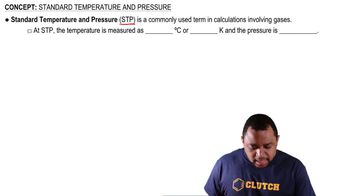Textbook Question
Using the answer from problem 8.61, how many grams of nitrogen are in Whitney's lungs at STP if air contains 78% nitrogen?
1359
views
 Verified step by step guidance
Verified step by step guidance Verified video answer for a similar problem:
Verified video answer for a similar problem:



 0:33m
0:33mMaster Standard Temperature and Pressure with a bite sized video explanation from Jules
Start learning